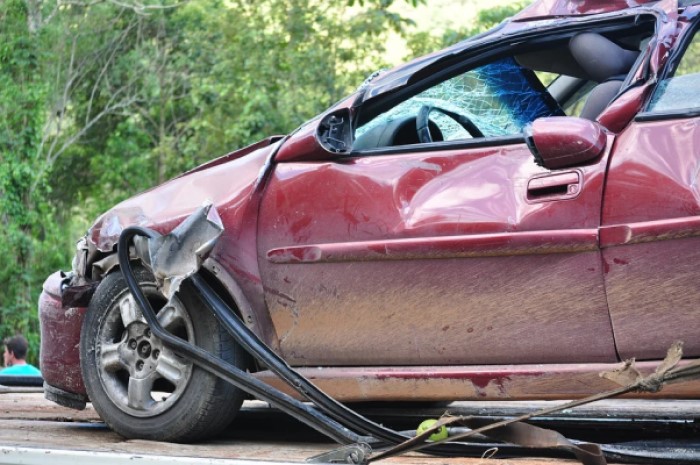
In 2022, 8.8% of drivers in the United States report a past at-fault collision, and these incidents kill 1.34 people for every 100 million miles driven. To put it another way, 1 in every 8,547 Americans gets killed in a car accident each year.
The purpose of this article is to help you better understand how no-fault states work and why they were created. However, you need to know that even in a no-fault state, you can still file a personal injury claim in some circumstances.
What Is a “Fault” State?
In an at-fault state, the person responsible for causing your accident is liable to pay you damages. This means that if you are involved in a car accident and another driver hits you, then that driver is responsible for paying for any injuries caused by their negligence.
California is a fault state. It ranks 2nd in the country with 3259 fatal crashes and 3563 deaths as of 2022. According to San Clemente car accident attorneys traumatic brain injuries, spinal cord injuries, and other catastrophic injuries are the most serious injuries that a person can get in a car collision.
If you are injured in a car accident and want to file a claim against the other party, you can sue them in court or file a tort claim.
The main difference between states with no-fault and those with fault rules comes down to what happens once an injury occurs.
If you’re in a “fault” state, you must prove that the other driver was at fault to receive compensation. In these states, drivers must carry their insurance and sue the other driver for damages if they wish to recover costs related to their accident.
Claim for Compensation
Injured people can file a claim for compensation for losses, also known as a personal injury or tort claim. Injured parties may be able to recover their medical bills, lost wages, pain, suffering, and more.
In an at-fault state, you can sue the person who caused your accident. The driver who rear-ended you in traffic might be liable for your injuries if they were driving too fast or doing something unsafe that contributed to the accident.
For example, text messaging while driving. You could also sue the manufacturer for a defective product that injured you if it was sold without appropriate safety warnings and instructions on how to use it safely. For example, an exploding soda bottle.
In some states like Florida, there are “no-fault” laws that allow an injured party no matter who caused the accident to receive compensation from their own insurance company regardless of fault.
At-Fault Is Not Criminally Negligent
It’s important to remember that a fault doesn’t mean the same thing as being criminally negligent. The legal definition of fault is simple. It means that you are at fault in an accident, regardless of any other contributing factors.
You could be at fault even if you don’t do anything wrong as a driver or pedestrian, but rather because the other party has more rights than you do under state law. Such as in some no-fault states where pedestrians don’t have any right to sue for injuries.
Can I Sue in an “At-Fault” State?
You can sue in an at-fault state. You can sue the other driver and their insurance company for the damages you incurred as a result of the accident. If you were injured, you may be able to recover compensation for pain and suffering, lost wages, medical expenses, and other damages caused by the accident.
To prove negligence on behalf of another party, there needs to be evidence that they failed to exercise reasonable care in driving. This could be during or before an incident or collision involving two or more vehicles/persons/animals, or any combination thereof).
In some states, this is called “strict liability” because negligence doesn’t need to be proven if it was proven beyond all reasonable doubt that another vehicle caused damage while driving.
This could be by breaking traffic laws, failing to stop at an intersection after hitting someone’s car, or speeding excessively fast down city streets where speed limits are set low.
Damages in “At-Fault” States
In an at-fault state, your damages are based on the severity of your injuries. In this case, you can sue for pain and suffering, lost wages, medical bills, and other expenses. However, the number of damages you’re entitled to depend on how much you lost due to the accident.
The most common factors that affect these losses include:
- Type and extent of injuries sustained
- How much time has passed since they were sustained (this affects whether any permanent disability has set in)
- Medical treatment needed to heal from those injuries
What Is a “No-Fault” State?
There are 12 no-fault states in the United States. They are Florida, Hawaii, Kansas, Kentucky, Massachusetts, Michigan, Minnesota, New Jersey, New York, North Dakota, Pennsylvania, and Utah.
In a no-fault state, you have to have insurance that pays for your medical bills in the event of an accident. You cannot sue the person at fault for damages.
You also cannot sue for pain and suffering or emotional distress. The insurance company will pay your medical bills, but not any other compensation or losses caused by the accident.
No-fault states do not require a driver who’s been injured in an accident to sue another party for payment. Instead, insurance companies pay out claims according to predetermined guidelines so long as certain conditions are met.
- You were injured while riding in a car or motorcycle with someone who had valid insurance.
- You were not intoxicated or under the influence of drugs at the time of the crash.
- The crash was not intentional (i.e., someone rear-ended you).
How Does “No-Fault” Insurance Work in a No-Fault State?
In a car accident in a no-fault state, you will not be required to prove the negligence of the other driver. This means that if you are injured in an accident your insurance company will cover your medical bills and compensate you for lost wages.
However, there are some limitations. You cannot sue for economic losses (like pain and suffering). That said, if someone else was at fault for causing your injury, they may still be held liable for certain damages under personal injury law. For example, an aggressive driver might be found liable for recklessness leading up to an accident that caused another person’s injuries.
Injury Claims in a No-Fault State
You can’t sue the other driver in a no-fault state. Instead, if you’re injured in a car accident, then you file a claim against your own insurance company. This is called making a third-party injury claim.
In some states that have only partial no-fault systems, an injured person can still make an at-fault claim against the other driver if he or she refuses to pay for their medical bills or vehicle damage costs.
If you were injured by someone who wasn’t at fault for causing an accident but was hurt nonetheless, then you can file suit against that person’s insurance company. This is for compensation for medical expenses, lost wages, and any pain and suffering that resulted from the collision.
You may also want to contact an attorney so they can help guide you through this process of filing suit against another party’s insurer as well as assist with collecting the evidence needed to prove their client’s injuries were caused by negligence.
The Hybrid System
Kentucky, Wisconsin, and New Jersey operate under pure no-fault car insurance rules. The other nine states have adopted what is called hybrid auto insurance systems. The following is an explanation of how each type of system works.
In a pure no-fault state, injured drivers are not allowed to sue their own insurance companies for pain and suffering damages. Instead, they must settle with the at-fault driver’s insurance company directly. The states have also limited medical expenses that can be reimbursed by the at-fault driver’s insurance company.
In hybrid no-fault systems, drivers are still able to sue their own insurance companies if they feel they’re being underpaid by their at-fault counterparts. However, states have set caps on how much money injured parties can receive from these lawsuits. The most common type of cap is an upper limit on medical expenses or compensation for lost wages.
The main takeaway from our discussion should be that if you live in a no-fault state, your insurance company will pay for your injuries regardless of who was at fault for causing the accident. If you do not live in a no-fault state and were injured by another driver’s negligence or recklessness, it may be possible to file a claim against them through their own insurance.






